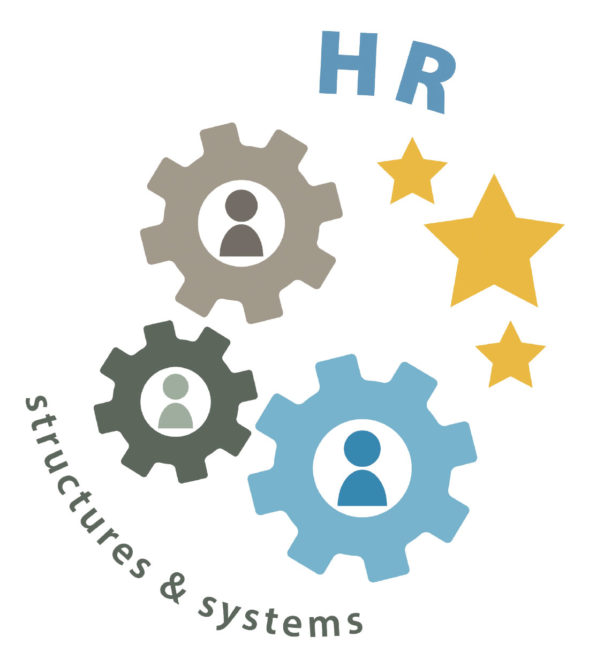A trend is emerging across the dairy industry, with some farmers becoming very professional in how they hire, develop, and lead employees. These farmers are highly aware that good employees are the most important asset for business success and that they may already be the scarcest resource available to farms. These professional human resource management (HRM) farms are consistently well-managed because they have excellent people in every position, and they are opening up a lead as they outperform other dairies who just can’t find or retain good people.
WHY PROFESSIONALIZE?
The business case for professionalizing HRM is clear. Labor has been in short supply for years and this is likely to continue. The competition for good employees will remain fierce. Once employees are in place, employers need to take every action they can to ensure that employees are productive and engaged in their work, so they will stay. A professional workplace removes barriers to employee success, enhancing performance and business profitability. Finally, modern agriculture has its opponents. The industry can’t afford to have unconscionable violations such as farm employees housed in substandard conditions or abusive relationships at work. If it does, then agriculture’s opponents will use these shortcomings to attack farms and the industry as a whole in the media and through the legal system.
AN UNPROFESSIONAL WORKPLACE
I grew up on a small family dairy farm. One big advantage of that lifestyle is that farm kids learned to do just about everything. Early in my working career I worked weekends for a single farmer so he could visit his girlfriend in another state. His operation was not a professional workplace. I had to use a rolling start for the TMR wagon tractor and bang on the electrical switchbox just so to make the silo unloader run. Worse, if the well pump breaker kicked off, I had to climb down in a pit to reset it. While climbing into that pit one weekend as I was working alone, I wondered: “How long will it take them to find me if I get electrocuted down in this pit with the water, pipes, and electricity?” You can’t find people today willing to work in conditions like this, and they shouldn’t have to.
A PROFESSIONAL WORKPLACE
In contrast with an unprofessional workplace, let’s consider the characteristics of a professional workplace.
Management plans and maintains the physical places where people work. Equipment, tools, and supplies are located close to where employees perform their tasks so they can be conveniently used. The workplace is kept organized, meaning that extra clutter is removed diligently, supplies are replenished, and storage and workspaces are updated to enhance employee performance. Attention and work time are allocated to maintain organization. Picture in your mind a neat, stocked, and organized machinery repair shop where the proper tools are stored conveniently, contrasted with a cluttered and dirty shop where the right tools seem to never find their way back to where they belong.
The workplace should be clean. After all, we’re in the food production business. A clean workplace also makes it easier to spot problems, like broken equipment, leaks, and spills. Clutter and dirt tend to hide problems, often making them worse.
A professional workplace is kept in good repair. This doesn’t mean that everything needs to be new, just well-maintained. Employees are quickly frustrated when broken equipment and tools force them to find less efficient workarounds. Frustration is amplified when employees ask to have something repaired and their request is ignored or takes way too long. Create and manage a repair system, make red tags available for employees to indicate something needs repair, create a log for reporting repaid needs and tracking completion, and most importantly, assign responsibility and authority to someone to complete repairs on a timely basis.
Safety is a sign of a professional workplace. Safety equipment, shields and warnings signs should be in place, along with personal protective equipment. Safety training should start with new employee onboarding and continue with regular refreshers. Larger farm workforces should have a safety committee in place. The committee’s purpose is to ensure that safety is a central part of the workplace culture, that procedures are in place to maintain safety, and to constantly look for ideas to improve overall safety. A great trend in recent years is high visibility vests provided to farm employees and required at work at all times. When farm management purchases this safety gear for employees, it sends many messages beyond just, “Hey…I’m here!” Messages to employees like:
- You’re important
- You’re worth investing in
- We care about your health and well-being
- We want you to get home to your family safe
- We do things right around here
MEETING EMPLOYEES’ NEEDS AS HUMANS
I’d like to share a little secret with farm managers. Your agribusiness partners, the veterinarian, nutritionists, and other service people who visit farms regularly, they all know which farms have bathrooms that are fit for use by humans and which do not. It says something about farm management when they provide an employee bathroom that is reasonable versus one that is an atrocious, filthy hellhole. The employees who work there don’t have the luxury of waiting to go at the next stop, they are stuck and have to use the hellhole. This is not acceptable. Fix the bathroom, put a cleaning schedule in place, allocate paid work time for cleaning, and use your management skills to provide an acceptable, usable bathroom for your employees and everyone who visits your farm.
Employees are humans and have needs as such. Provide a breakroom where they can relax on break, a locker or cubby to put their personal items, a refrigerator to stash their lunch, a microwave to heat it up, and a source of clean water. While you’re at it, think about ergonomics on the farm. Where can the workplace be modified to make work easier on the limbs and backs of employees?
CLEAR POLICIES, RULES, AND EXPECTATIONS
Workplace culture flows down from owners and senior management, and they have the opportunity to establish workplace behaviors through clear expectations, rules, and policies. A professional workplace has a strict policy against behaviors such as sexual harassment and discrimination. It also uses an employee handbook to clarify expectations about items such as: pay schedules and increases, hours and overtime, cell phone usage, attendance and timeliness, leave from work, and other benefits. Many of these things are taught to new employees during their onboarding experience, which also serves as their first exposure to the farm’s effective leadership practices.
EFFECTIVE LEADERSHIP
Professional HRM just can’t exist without effective leadership. Professional managers know that supervising others is their most important responsibility. In fact, supervising others appears clearly in a manager’s job description as their main responsibility. These professional managers are crystal clear about the three parts of effective supervisory leadership:
1. Set clear expectations about behaviors and performance.
2. Provide training and other learning opportunities.
3. Provide effective feedback to employees about their performance.
Some dairy businesses are professionalizing their HRM as a competitive advantage and gateway to long-term success. Other farms must increase their professionalism rapidly to find and keep good employees. Support is available from industry organizations, extension, and even some outsourcing companies, to improve farm HRM. This type of change, unfortunately, can be difficult, because it involves changing personal beliefs and behaviors. Professional managers value employees as assets to invest in and develop, rather than viewing HR as a necessary evil of business growth. Changing this personal value is the first step to become a professional human resource manager.
Learn more about the program at Cornell Agricultural Workforce Development.
 |
This article appeared in PRO-DAIRY’s The Manager in July 2022. To learn more about Cornell CALS PRO-DAIRY, visit PRO-DAIRY. |






